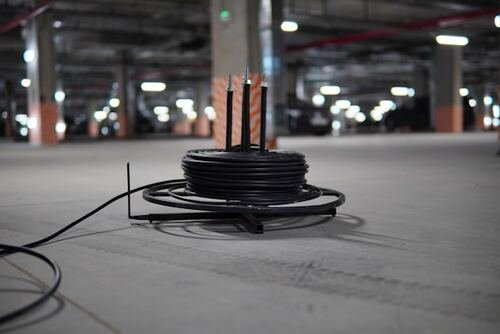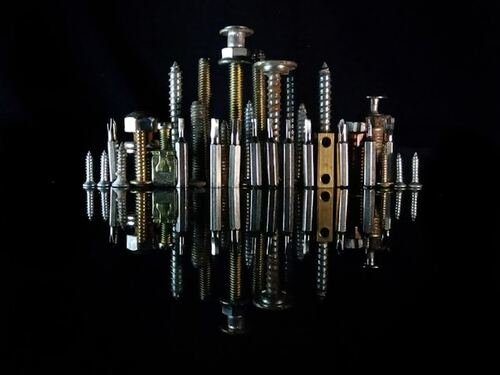When safeguarding equipment or closing off pipes and tubes, the distinction between caps and plugs becomes crucial. These small components play a significant role in protection and safety, particularly in industrial settings. Despite their seemingly simple functions, selecting the right cap or plug can impact system integrity, maintenance, and operation. In this article, we delve into the nuances of these components, highlighting key differences and informing you on when to opt for one over the other. Keep reading to enhance your understanding of caps and plugs and ensure you’re making informed decisions in their application.
Caps Versus Plugs: Defining the Basics and Core Differences
Caps and plugs serve a similar purpose: they cover or seal the end of a pipe, tube, or other openings to protect against contamination, and damage, or to control the flow of fluids. However, their application is where the primary distinction lies. A cap usually fits over the end of the component it is designed to protect, similar to a hat on a head. It’s typically used when the covering is external and needs to encompass the end part of an item.
On the other hand, plugs fit inside the component they are meant to seal, like a cork in a bottle. They rely on internal dimensions for a snug fit and are chosen when the aim is to seal off an opening from within. The fit of a plug is critical as it must be tight enough to prevent leakage or contamination but should also allow for easy removal when necessary.
Understanding these basics is essential for anyone involved in maintenance, operations, or engineering fields. Whether you’re working with hydraulic fittings, tubing, or machinery, choosing between a cap and a plug is a fundamental decision. A trusted supplier provides an extensive range of options to suit diverse requirements and specifications.
Industry Applications: Where Caps and Plugs Are Essential
Caps and plugs find their applications across a wide range of industries, from aerospace to automotive, and from manufacturing to medical fields. In the automotive industry, they are used to protect ports during sandblasting, painting, or storage. In the oil and gas sector, they ensure that pipes are sealed properly to prevent contamination or leakage of precious materials.
Proper installation and removal are key to the functionality of caps and plugs. In general, care should be taken not to over-tighten caps, as this can cause damage to the cap, the thread, or the component itself. With plugs, ensuring a snug fit is crucial, but the force should be appropriate to the material and design—the goal is to create a seal without deforming the plug or the orifice.
Many caps and plugs are designed with features that aid in installation and removal. For example, a ribbed or fluted design can provide a better grip, allowing for easier handling. Some designs include a tab or ear that can be grabbed with tools or fingers, making them much easier to remove. Where high volumes of caps and plugs are used, tools such as cap or plug installers and removers can increase efficiency and reduce strain on workers.
Making the Right Choice Between Caps and Plugs for Your Needs
The process of selecting the proper cap or plug often comes down to the application’s specifics. Taking stock of the environment, the materials being secured, the operational conditions, and the regulations or standards at play is critical. Moreover, considering the physical constraints of the space where they will be used is equally vital. With this holistic approach, you’ll ensure that the chosen caps and plugs will perform as needed for the task at hand.
When in doubt, it’s beneficial to consult specialists who can offer insights based on experience with similar requirements. The property of a cap or plug can often be enhanced with the right expertise, offering better performance and longer service life. After all, a successful application often involves both a quality product and the knowledge to use it correctly.
Overall, the utilitarian roles of caps and plugs in various industries cannot be overestimated. Their selection and application require careful consideration of material, design, and environmental factors. By incorporating these elements into your decision-making process, you can be confident in the performance and reliability of your system’s protective components.
In the realm of electronics, caps and plugs protect delicate components during shipping and handling, preventing dust, moisture, and other contaminants from compromising the integrity of the product. The medical industry similarly benefits, using these small components to maintain the sterility of equipment or to ensure that devices are free from contaminants during manufacturing and transport.
Installation and Removal: Best Practices for Caps and Plugs
Proper installation and removal are key to the functionality of caps and plugs. In general, care should be taken not to over-tighten caps, as this can cause damage to the cap, the thread, or the component itself. With plugs, ensuring a snug fit is crucial, but the force should be appropriate to the material and design—the goal is to create a seal without deforming the plug or the orifice.
Many caps and plugs are designed with features that aid in installation and removal. For example, a ribbed or fluted design can provide a better grip, allowing for easier handling. Some designs include a tab or ear that can be grabbed with tools or fingers, making them much easier to remove. Where high volumes of caps and plugs are used, tools such as cap or plug installers and removers can increase efficiency and reduce strain on workers.
Making the Right Choice Between Caps and Plugs for Your Needs
The process of selecting the proper cap or plug often comes down to the application’s specifics. Taking stock of the environment, the materials being secured, the operational conditions, and the regulations or standards at play is critical. Moreover, considering the physical constraints of the space where they will be used is equally vital. With this holistic approach, you’ll ensure that the chosen caps and plugs will perform as needed for the task at hand.
When in doubt, it’s beneficial to consult specialists who can offer insights based on experience with similar requirements. The property of a cap or plug can often be enhanced with the right expertise, offering better performance and longer service life. After all, a successful application often involves both a quality product and the knowledge to use it correctly.
Overall, the utilitarian roles of caps and plugs in various industries cannot be overestimated. Their selection and application require careful consideration of material, design, and environmental factors. By incorporating these elements into your decision-making process, you can be confident in the performance and reliability of your system’s protective components.



